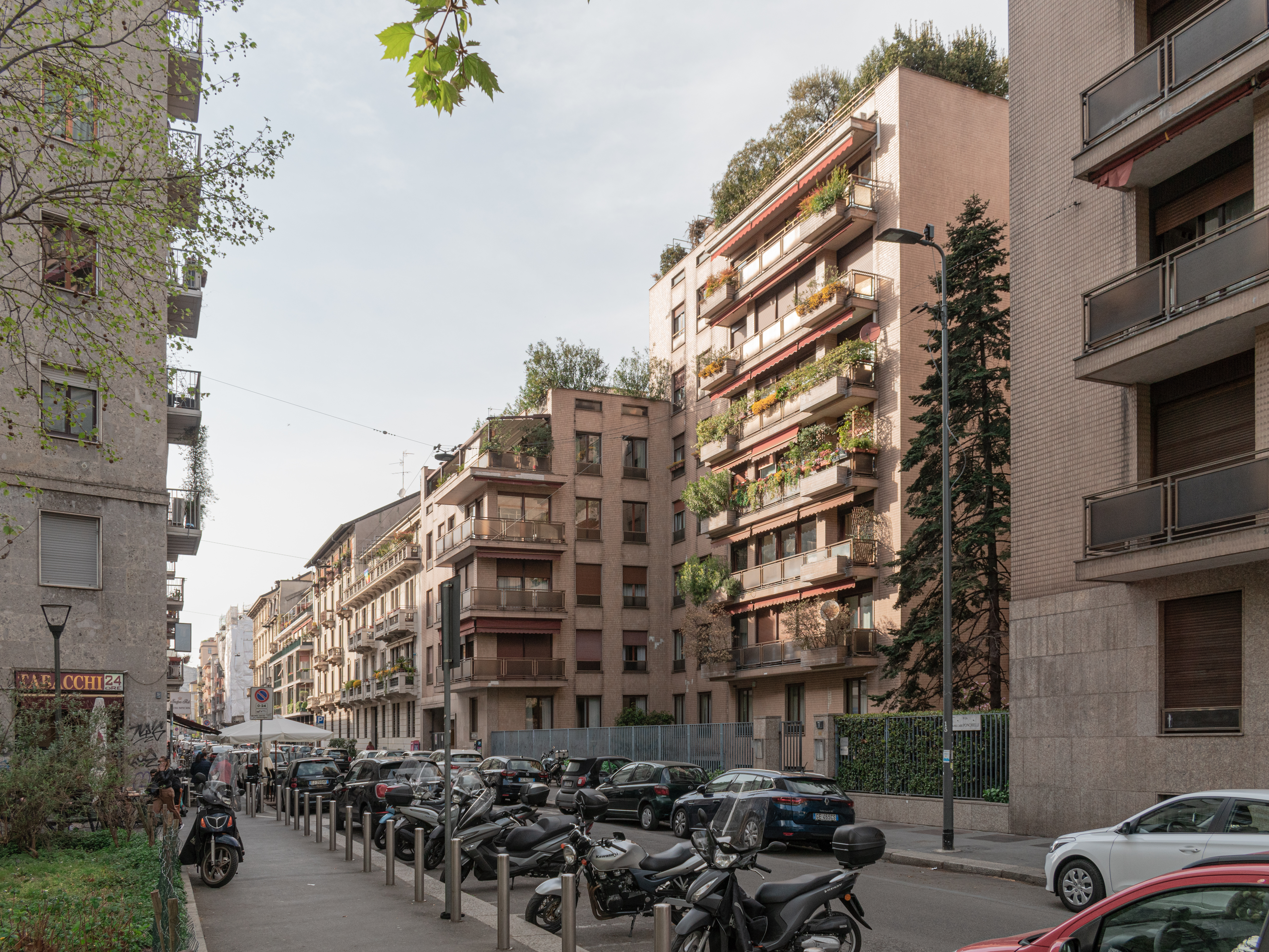
Oases in the grid: The gardens of postwar Milanese middle-class housing
##plugins.themes.immersion.article.figure##

Abstract
The essay investigates the Milanese street-front gardens of post-WWII middle-class housing. Spread around the city by hectic developers, these gardens reflect specific cultural- al, political and social conditions of Italy’s industrial capital during the economic miracle.
Street-facing gardens are an essential feature of modern middle-class condominiums. They reflected the modernist urban vision of a park-city and the Milanese tradition of the street facade; they encapsulate the bourgeois culture with its urge for representative decorum and the freedom of architectural experimentation; their image was used as a marketing tool in real estate advertisement but also as an argument in negotiation for the building licence. In Post-WWII Milan urban nature radically changed its connotation: from a hygienic device, it transformed into a status symbol, and the Milanese started to take care of gardens precisely because of their decorative importance. Even though they are private, they are designed to be looked at from the street, and therefore they make an important part of the everyday urban experience.
Beyond their speculative nature, the gardens of Milanese condominiums transformed the urban landscape, bringing density together with well-cared nature into the city streets. The essay explores this phenomenon through a series of distant and close-up views as if following a wandering gaze through the streets of the city.
Cover image: Condominium in Piazzale Bacone, arch. Gustavo and Vito Latis, 1968
References
- Gaia Caramellino and Federico Zanfi (editors), Post-war Middle-class Housing. Models, Construction, Change (Bern: Peter
- Lang, 2015).
- Bruno Bonomo, Gaia Caramellino, Filippo De Pieri and Federico Zanfi (editors), Storie di case. Abitare l’Italia del boom
- (Rome: Donzelli editore, 2014).
- Giò Ponti, “Paesaggio moderno di Milano”, in Domus, no. 312, (1955), 7-10.
- Corinna Morandi, Milano. La grande trasformazione urbana (Venezia: Marsilio, 2015), 19-22.
- Fulvio Irace, Milano Moderna. Architettura e città nell’epoca della ricostruzione (Milan: Motta Editore, 1996), 50-52.
- Maria Vittoria Capitanucci, Il professionismo colto nel dopoguerra (Milan: Solferino edizioni, 2015), 13-23.
- Federico Zanfi, “Convenzione urbanistiche e il nuovo paesaggio residenziale per i ceti medi a Milano tra gli anni ‘50 e ‘70”, in Territorio, n. 64, (2013), 66-74.
- Daniel Sherer, “The Discreet Charm of the Entryway. Architecture, art, and design in the Milanese ingressi, 1910-70”, in
- Entryways of Milan - Ingressi di Milano, ed. Karl Kolbitz (Taschen: Cologne, 2017), 22-2.